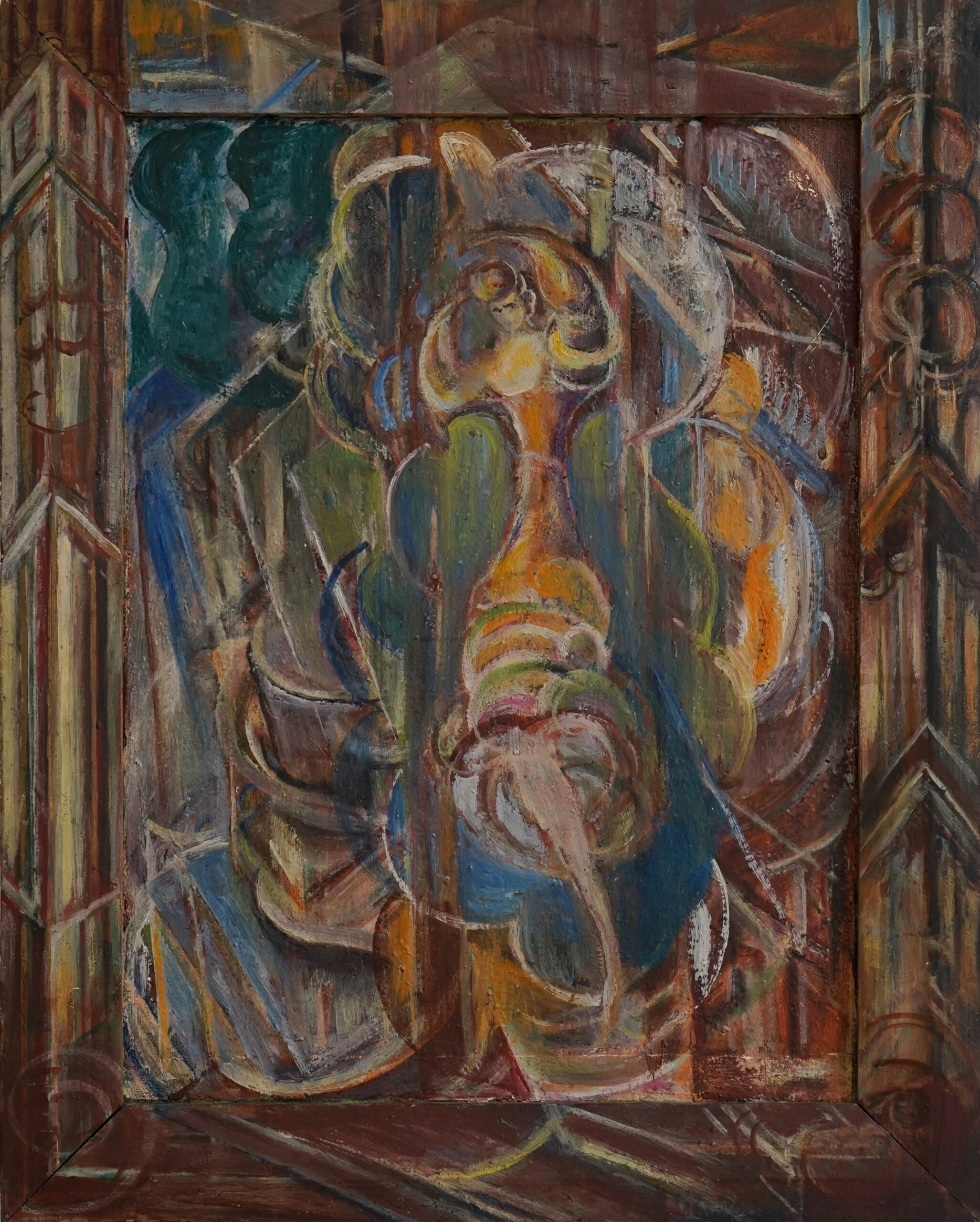Józef Doskowski
Formist
13.05-25.06.22
After nearly one hundred years, Józef Doskowski’s works made in the 1920s have been shown to the public, and the catalogue accompanying the exhibition is the first publication devoted to this artist. Individual paintings made by the artist can be found today in museum collections of the National Museum in Warsaw, among others.
His painting “Ballerina”, which had been lost, was selected by Władysław Strzemiński for the International Collection of Modern Art. It is worth mentioning that only four painters from the circle of Formists have gained recognition: Leon Chwistek, Tytus Czyżewski, Józef Doskowski and Stanisław Ignacy Witkiewicz.
Doskowski, being a follower of futuristic ideas, tried to reflect the shifting forms, horses, vehicles, bicycles, cars in his paintings and drawings. The title, which clarifies the message and is a synthesis of the author’s thoughts, has always played an important role in his paintings. The idea was determined by the action located in the central place of the composition, often emphasized by a geometric frame.
He placed the created characters in the chaos of the contemporary world, considering the totality of the inborn and acquired spiritual qualities. Many times on the back of his sketches he wrote down fragments of texts or loose remarks such as:
“life is only life after all”; “the sun has gone down”; “there is nothing one should be able to do”.
Particular annotations drew attention to the metaphysical, the loss of an individual, sometimes in paradise and sometimes in hell.
In 1924 Doskowski began to paint the works that made up the Allegories of War series. Their origins stem from the author’s negative attitude towards any military actions. The most frequently mentioned piece from this series is Victory. It is difficult to discern any features of “chivalry” and “the mood of victory” from the menacing figures. The static, monumental figures of warriors depicted by Doskowski are the representations of machines made for destruction, allegories of the mindlessness of war.
At the end of the 1920s, Doskowski withdrew from active activity in the sphere of visual arts in favour of literature (a few thousand pages of manuscripts of futuristic plays, among others, have survived).
Expressing his views on art as a whole, he limited himself to a statement:
“The concept of Formism has reached my imagination” – “I am a Formist”.
In a succint way Doskowski defined the direction of his creative actions, he believed that an artist, through their persnal achievements, creates a “SCREEN of the self” for the audience’s benefit, which is peculiar to them.
Works
| Status | Title | Year | Technique | Dimensions | |
|---|---|---|---|---|---|
| Loading… |

|
In the Living Room | c. 1924 | watercolor/papier | 21 x 34 cm |
| Loading… |

|
Interior | c. 1922 | oil/wood | 44.5 x 54.5 cm |
| Loading… |

|
Poor Country (Spiritually) | c. 1928 | watercolor/paper | 45 x 31.5 cm |
| Loading… |
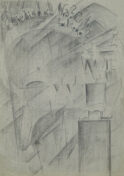
|
Scenographic Fantasy with Devil Statue. Feast No. 3? What is it? | c. 1926 | pencil/paper | 29.5 x 20.5 cm |
| Loading… |
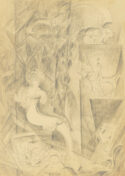
|
Scenographic Fantasy with Woman and Don Quixote Statues | c. 1924 | pencil/paper | 30 x 21 cm |
| Loading… |
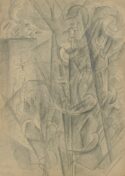
|
Scenographic Fantasy. Vision of hell | c. 1926 | pencil/paper | 30 x 21 cm |
| Loading… |
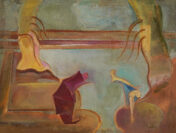
|
Scenographic Sketch. Discussion | c. 1926 | watercolor/paper | 31.5 x 41.5 cm |
| Loading… |
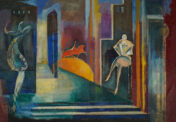
|
Scenographic Sketch. Inside | c. 1926 | watercolor/paper | 45 x 70 cm |
| Loading… |
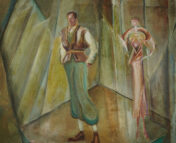
|
Self-Portrait with Muse | c. 1924 | watercolor/paper | 36 x 43.5 cm |
| Loading… |
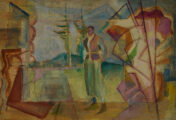
|
Sketch for a Self-Portrait | c. 1924 | watercolor/paper | 31.5 x 45 cm |
| Loading… |
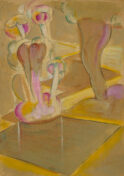
|
Study for an Allegory of War. Explosions | c. 1924 | watercolor/paper | 30 x 21 cm |
| Loading… |
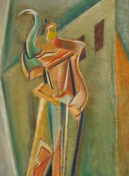
|
Study for an Allegory of War | c. 1924 | watercolor/paper | 24 x 17.5 cm |
| Loading… |
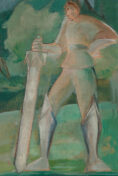
|
Study for an Allegory of War | c. 1924 | watercolor/paper | 31 x 18.5 cm |
| Loading… |

|
Dance | c. 1924 | watercolor/paper | 29 x 37 cm |
| Loading… |

|
Dancer | c. 1922 | oil/wood | 57 x 45.5 cm |
| Loading… |

|
In Strzeszkowice | c. 1926 | watercolor/paper | 21 x 34 cm |
| Loading… |
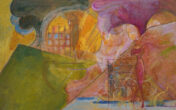
|
Inside | c. 1924 | akwarela/papier | 21.5 x 33.5 cm |
| Loading… |

|
Lost | c. 1928 | pencil/paper | 32 x 20 cm |
| Loading… |
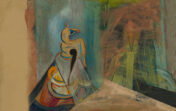
|
On stage | c. 1924 | akwarela/papier | 22.5 x 31 cm |
| Loading… |
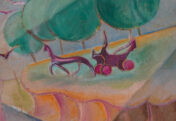
|
Ride | c. 1924 | watercolor/paper | 16 x 23.5 cm |
| Loading… |
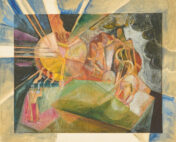
|
Scenographic Study | c. 1926 | watercolor/paper | 20.3 x 25 cm |
| Loading… |

|
Sitting | c. 1926 | watercolor/paper | 22.5 x 31 cm |
| Loading… |
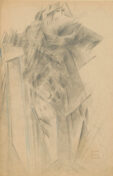
|
Sketch for an Allegory of War | c. 1924 | pencil/paper | 35 x 25 cm |
| Loading… |
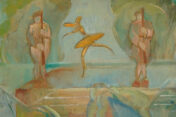
|
Study for an Allegory of War. Dance | ok. 1924 | watercolor/paper | 20 x 35.5 cm |

